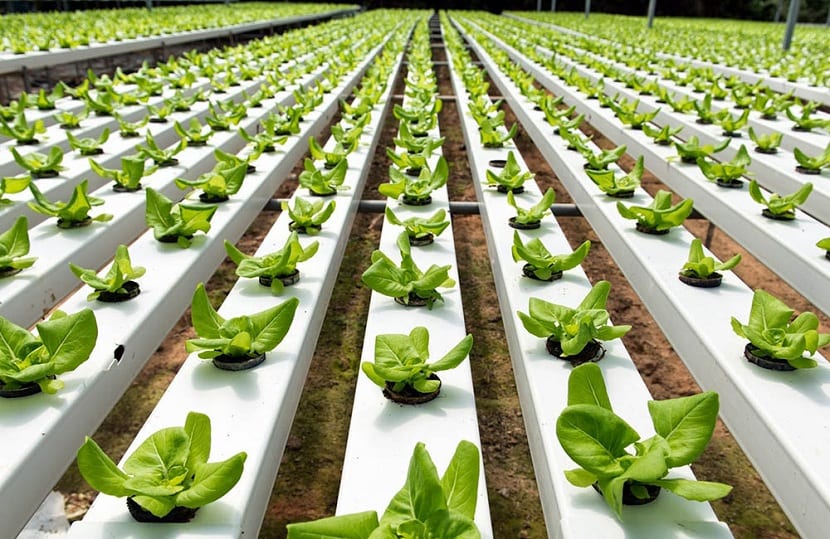
There are alternative ways to grow plants other than agricultural soils, gardens, and pots. It is about hydroponic crops.
What is hydroponics?
Hydroponics is a method that consists of the use of solutions for growing plants instead of using the soil. There are many ways to use this technique and it is very useful. Do you want to know everything about hydroponics?
Hydroponics Features
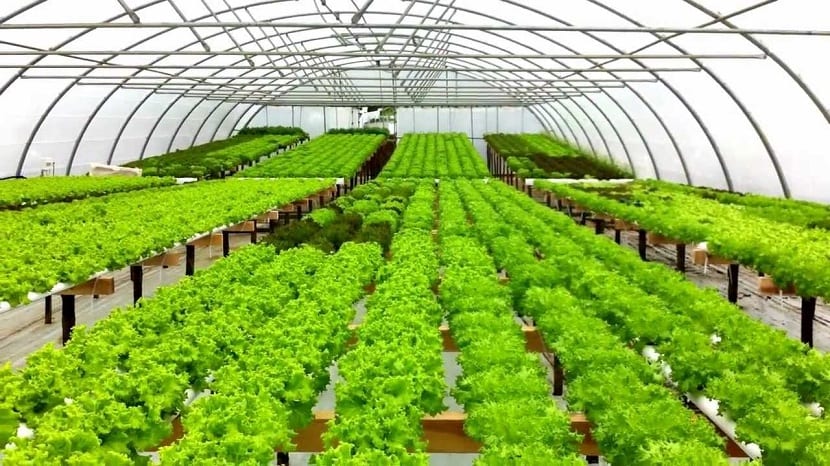
When we use this technique for planting, the roots receive a solution rich in nutrients necessary to grow and of balanced concentrations dissolved in water. In addition, this solution has all the essential chemical elements for a good development of the plant. Thus, the plant can grow in a mineral solution only, or in an inert medium, such as gravel, pearlite or sand.
This technique was discovered in the XNUMXth century when scientists saw that essential minerals are absorbed by plants through inorganic ions dissolved in water. In natural conditions, the soil acts as a reserve of mineral nutrients, but the soil itself is not essential for the plant to grow. When the mineral nutrients in the soil are dissolved in water, the roots of the plant are able to absorb them.
Because plants are able to incorporate nutrients into a solution, a substrate is not required for the plant to develop and grow. Almost any plant can be grown using the hydroponic technique, although there are some that more easily and better results than others.
Hydroponics uses
Today, this activity is reaching a great boom in countries where the conditions for agriculture are adverse. Combining hydroponics with good greenhouse management, yields are much higher than those obtained in open-air crops.
In this way, we can make the vegetables grow quite quickly and provide them with food rich in nutrients. The hydroponics technique it is simple, clean and inexpensive, so for small-scale agriculture, this is a very attractive resource.
It has even achieved commercial standards and that some foods, ornamentals and young tobacco plants are grown in this way for various reasons that have to do with the lack of adequate soils.
Today there are many areas that have soils contaminated by spills or microorganisms that cause plant diseases or by using groundwater that degrades the quality of the soils. Thus, hydroponic cultivation is a solution to problems of contaminated territory.
When we do not use the soil as a place to grow, we do not have the buffering effect that an agricultural soil provides. However, they have various problems with oxygenation of the roots and it is not something that can be called clean on commercial scales.
There are many people who use hydroponics. People with free time who want to entertain and investigate, for research, for demonstrations to students about the essentiality of certain chemical elements, even for those who want to grow in a container or a small tub, to grow in spaceships or for large-scale crops .
Classification and advantages offered by hydroponics
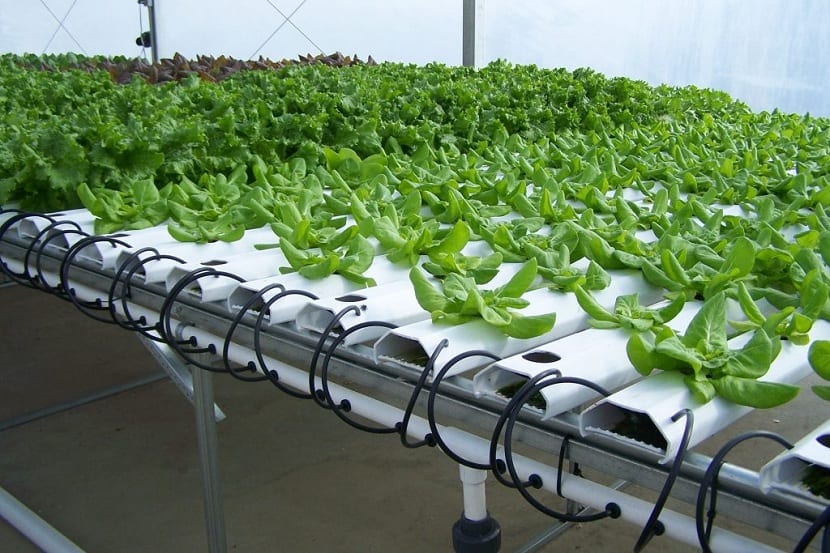
Hydroponic crops have recently evolved given the ways it is used and the environmental impact it causes. On the one hand, we find the forms open, which are those that dump the effluent, and on the other hand, we have the closed ones, which reuse the nutrient solution as a form of environmental protection and greater economy in its use.
Hydroponics avoids the impediments and limitations that a conventional agricultural soil presents. Agricultural soils require the substrate, solid material, herbicides, fertilizers, pesticides, etc.
Hydroponics can have an inert substrate if desired, such as perlite, pumice, peat, gravel, etc.
Hydroponic systems were initially of the "open" type, since the environmental impact of the discharge of effluents used in cultivation was not taken into account. Once they saw the impacts of the dumping of the solution on the environment, the 'closed' methods were developed. This method is based on the reuse of nutrients for other crops, avoiding generating impacts on the environment.
Hydroponics offers many advantages over conventional crops:
- It allows to grow indoors (balconies, terraces, patios, etc.)
- Requires less space (overlapping installations can be made to further multiply the space)
- The cultivation period is shorter than in traditional agriculture, since the roots are in direct contact with the nutrients, achieving extraordinary growth of stems, leaves and fruits.
- It requires less labor, since it is not necessary to work the land (remove the soil, carry out transplants, clean the crops, etc.)
- There is no problem of soil erosion, as in traditional crops
- It is not necessary to apply fertilizers, so the vegetables produced are 100% organic.
The fact not need fertilizers it is a great advantage in terms of environmental impact. As we know, the excessive use of nitrogen fertilizers is one of the main causes of eutrophication of waters and groundwater contamination. By avoiding the use of fertilizers we will be reducing the negative impacts on the environment.
Use of containers
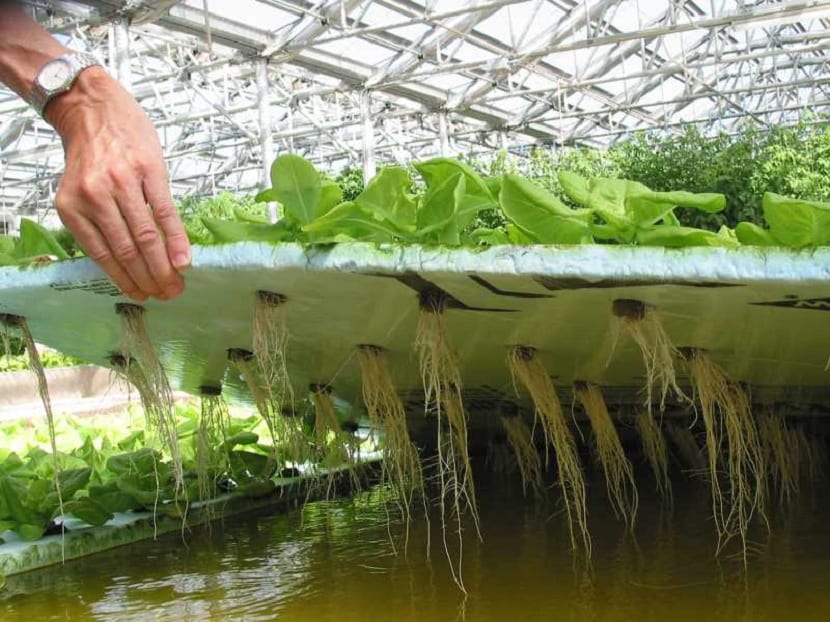
Very recently, the use of containers in hydroponics systems has been proposed. Along with "exponentially higher" yields, the use of containers in hydroponics ensures that all growing systems also they will use 90% less water than is used in conventional agriculture.
When using containerized hydroponics, it is necessary to ensure that the water passes through the same place every twelve minutes. In this way we will be turning the crops into a portable farm.
If we do calculations, using hydroponics, it can be harvested about 4.000 to 6.000 weekly vegetable units (which amounts to about 50 tons per year), which is equivalent to 80 times the number of units that are achieved in the same space using conventional sowing and harvesting systems in agriculture.
As you can see, hydroponics is an increasingly widespread technique, since it does not require agricultural land and optimizes resources and space. If we extend hydroponics, we will give a break to agricultural soils that are under so much pressure from excess fertilizers, plows, herbicides and other chemicals used, while contributing to a reduction in pollution.
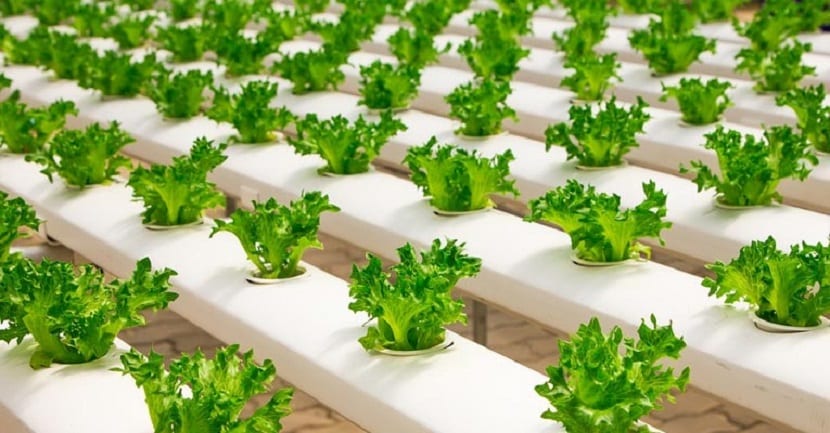

I would be interested to know what type of nutrients plants carry and where they are bought.
Where can you buy the square pvc tubes to be able to start or treat in hydroponics for family use in argenrin?